Wuthering Heights (1939 film)
9.4 /10 2 Votes
100% Rotten Tomatoes Genre Drama, Romance Duration Country United States | 7.7/10 IMDb Language English | |||||||||||||||||||||||||||||||||
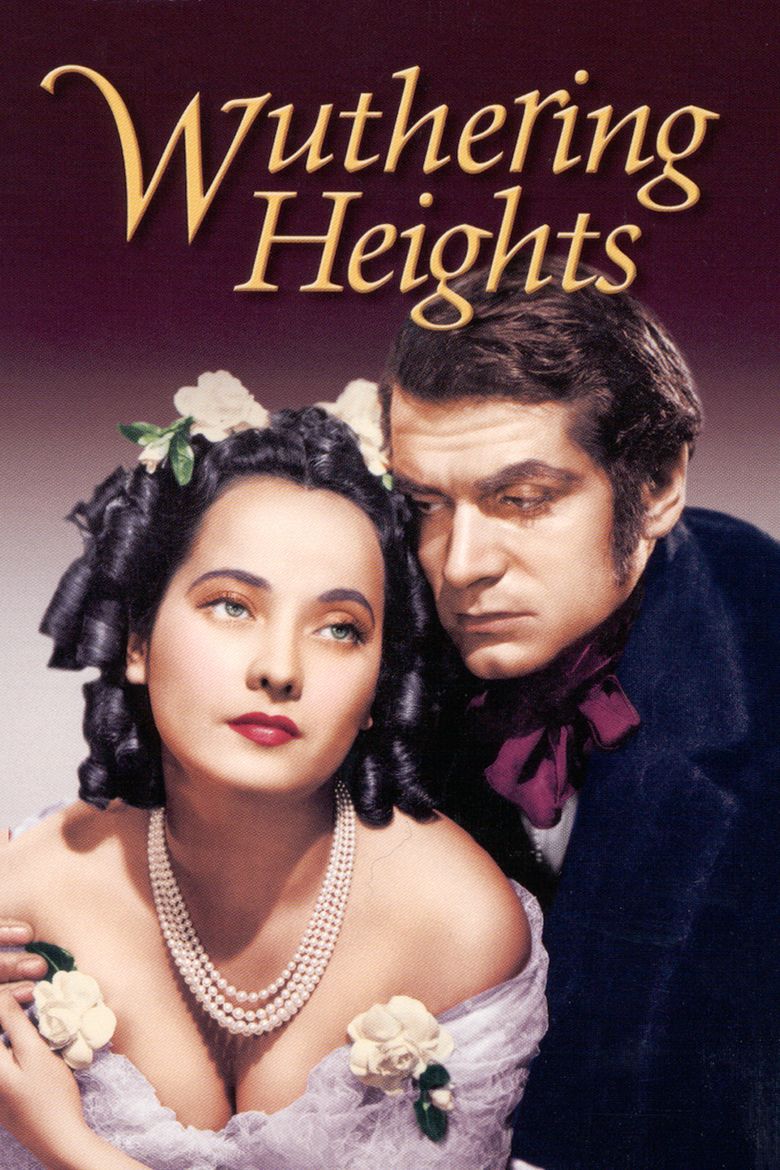 | ||||||||||||||||||||||||||||||||||
Release date April 13, 1939 (1939-04-13) Based on Wuthering Heights by Emily Bronte Initial release March 24, 1939 (Hollywood) Cast Similar movies Shall We Kiss? , Just a Question of Love , August Rush , The Godfather , Blackhat , Up Tagline SINISTER SHADOWS & BURNING LOVE | ||||||||||||||||||||||||||||||||||
Wuthering heights official trailer 1 david niven movie 1939 hd
Wuthering Heights is a 1939 American drama romance film directed by William Wyler and produced by Samuel Goldwyn. It is based on the novel, Wuthering Heights by Emily Brontë. The film depicts only sixteen of the novel's thirty-four chapters, eliminating the second generation of characters. The novel was adapted for the screen by Charles MacArthur, Ben Hecht and John Huston. The film won the 1939 New York Film Critics Award for Best Film. It earned nominations for eight Academy Awards, including for Best Picture and Best Actor in what many consider Hollywood's greatest single year. The 1940 Academy Award for Best Cinematography, black-and-white category, was awarded to Gregg Toland for his work. Nominated for original score (but losing to The Wizard of Oz) was the prolific film composer, Alfred Newman, whose poignant "Cathy's Theme" does so much "to maintain its life as a masterpiece of romantic filmmaking."
Contents
- Wuthering heights official trailer 1 david niven movie 1939 hd
- Wuthering heights 1939 laurence olivier
- Plot
- Omissions from the novel
- Cast
- Production
- Reception
- Miscellaneous
- Radio adaptations
- References
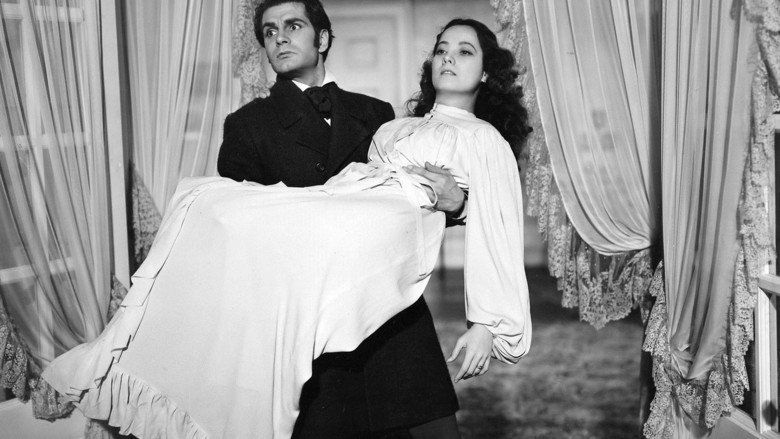
In 2007, Wuthering Heights was selected for preservation in the United States National Film Registry by the Library of Congress as being "culturally, historically, or aesthetically significant".

Wuthering heights 1939 laurence olivier
Plot

A traveller named Lockwood (Miles Mander) is caught in the snow and stays at the estate of Wuthering Heights, despite the cold behaviour of his aged host, Heathcliff (Laurence Olivier). Late that night, after being shown into an upstairs room that was once a bridal chamber, Lockwood is awakened by a cold draft and finds the window shutter flapping back and forth. Just as he is about to close it, he feels an icy hand clutching his and sees a woman outside calling, "Heathcliff, let me in! I'm out on the moors. It's Cathy!" Lockwood calls Heathcliff and tells him what he saw, whereupon the enraged Heathcliff throws him out of the room. As soon as Lockwood is gone, Heathcliff frantically calls out to Cathy, runs down the stairs and out of the house, into the snowstorm.
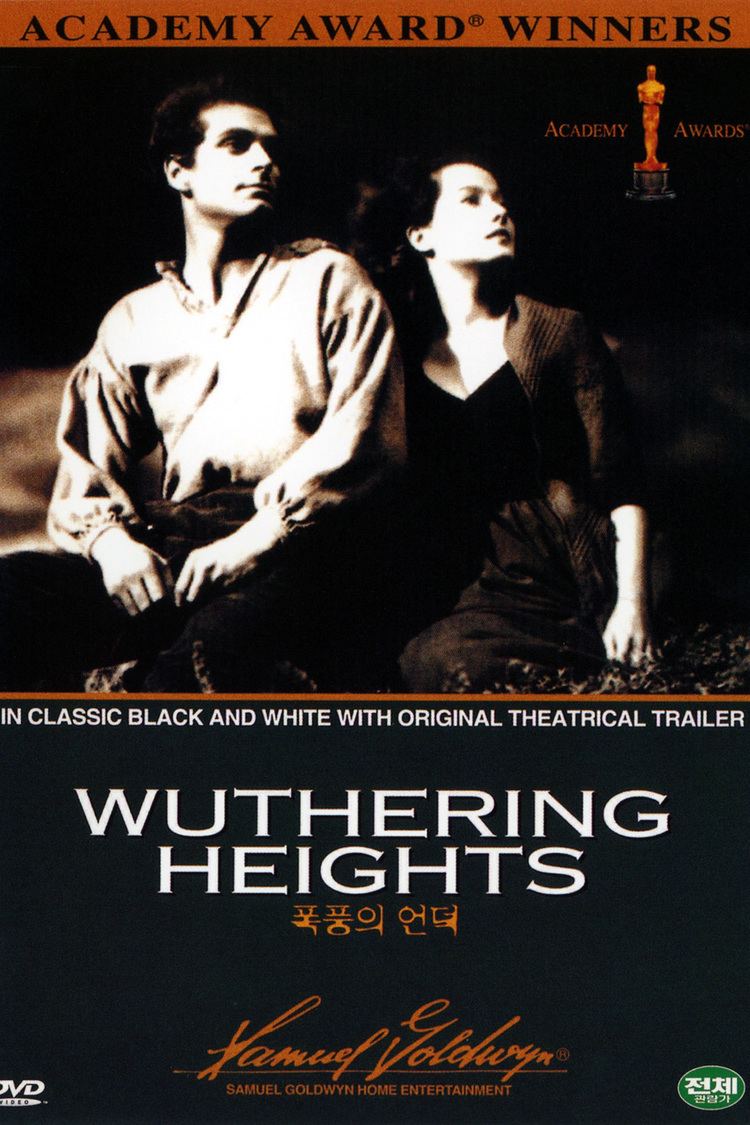
Ellen, the housekeeper (Flora Robson), tells the amazed Lockwood that he has seen the ghost of Cathy Earnshaw, Heathcliff's great love, who died years before. When Lockwood says that he doesn't believe in ghosts, Ellen tells him that he might if she told him the story of Cathy. And so the main plot begins as a long flashback.
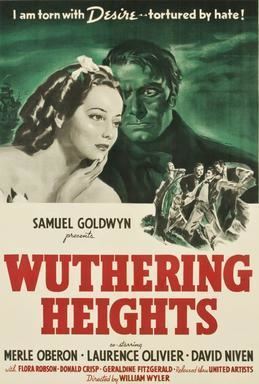
The plot then flashes back 40 years. As a boy, Heathcliff is found on the streets by Mr. Earnshaw (Cecil Kellaway), who brings him home to live with his two children, Cathy and Hindley. At first reluctant, Cathy eventually welcomes Heathcliff and they become very close, but Hindley treats him as an outcast, especially after Mr. Earnshaw dies. About ten years later, the now-grown Heathcliff and Cathy (Merle Oberon) have fallen in love and are meeting secretly on Peniston Crag (because of censorship, their relationship in the film is kept strictly platonic in spite of the fact that they do kiss, while in the novel it is implied that their relationship was romantic). Hindley (Hugh Williams) has become dissolute and tyrannical and hates Heathcliff. One night, as Cathy and Heathcliff are out together, they hear music and realize that their neighbors, the Lintons, are giving a party. Cathy and Heathcliff sneak to the Lintons and climb over their garden wall, but the dogs are alerted and Cathy is injured. Heathcliff is forced to leave Cathy in their care. Enraged that Cathy would be so entranced by the Linton's glamor and wealth, he blames them for her injury and curses them.

Months later, Cathy is fully recuperated but still living at the Lintons. Edgar Linton (David Niven) has fallen in love with Cathy and soon proposes, and after Edgar takes her back to Wuthering Heights, she tells Ellen what has happened. Ellen reminds her about Heathcliff, but Cathy flippantly remarks that it would degrade her to marry him. Heathcliff overhears and leaves. Cathy realizes that Heathcliff has overheard, is overcome by guilt and runs out after him into a raging storm. Edgar finds her and nurses her back to health once again, and soon he and Cathy marry.
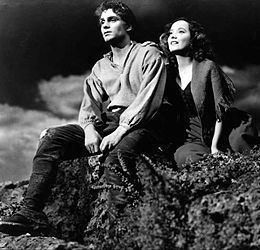
Heathcliff was thought to have disappeared forever but returns two years later, now wealthy and elegant. He has refined his appearance and manners in order to both impress and spite Cathy and secretly buys Wuthering Heights from Hindley, who has become an alcoholic. In order to further spite Cathy, Heathcliff begins courting Edgar's naive sister, Isabella (Geraldine Fitzgerald), and eventually marries her. The brokenhearted Cathy soon falls gravely ill. Heathcliff rushes to her side against the wishes of the now disillusioned and bitter Isabella, and Cathy dies in Heathcliff's arms.
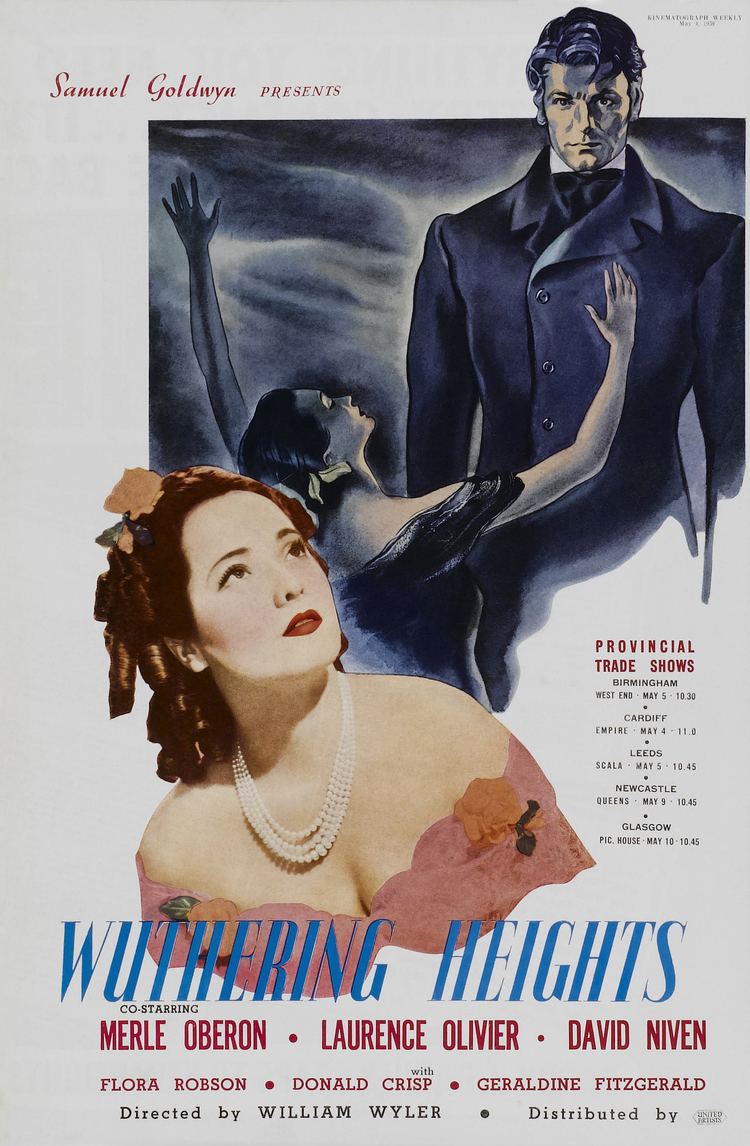
The flashback ends and we return to Ellen finishing her story. The family doctor, Dr. Kenneth (Donald Crisp), bursts in, saying that he (Dr. Kenneth) must be mad, having seen Heathcliff in the snow, walking with his arm around a woman. Ellen exclaims, "It was Cathy!" and Dr. Kenneth says, "No, I don't know who it was", and tells them that he was then thrown from his horse. As he drew closer, he found Heathcliff lying in the snow. The woman had disappeared and there was no sign of her, and only Heathcliff's footprints appeared in the snow, not hers. Lockwood asks, "Is he dead?", and Dr. Kenneth nods, but Ellen says, "No, not dead, Dr. Kenneth. And not alone. He's with her. They've only just begun to live."
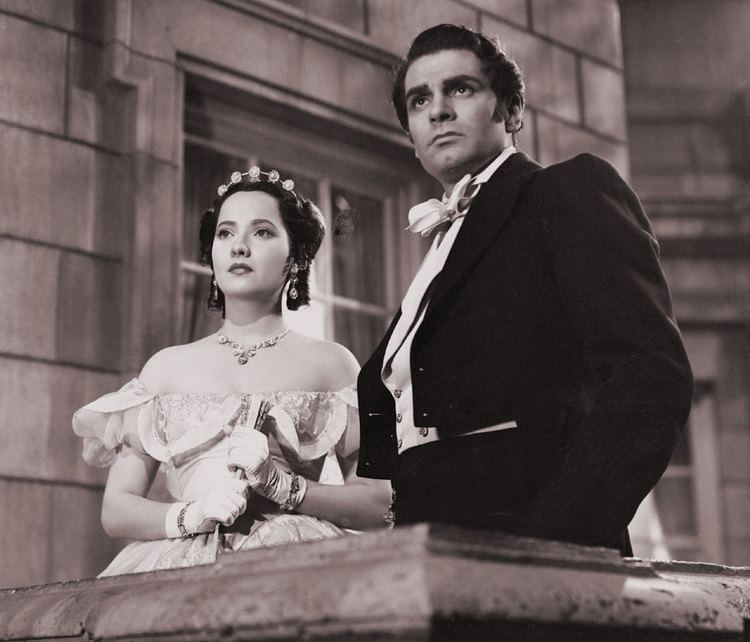
The last thing seen in the film are the ghosts of Heathcliff and Cathy, walking in the snow, superimposed over a shot of Peniston Crag.
Omissions from the novel
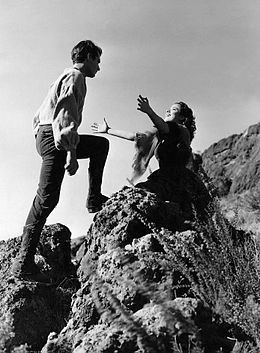
The film omitted any mention of Cathy's daughter and Heathcliff's son, both of whom play a major role in the last portion of the book. In the film, neither Heathcliff nor Cathy has any children. Isabella does not leave Heathcliff, or die, unlike in the novel where she manages to escape him and later passes away. Instead she remains his troubled, but loyal, wife even when Mr. Lockwood visits.
Cast

Production
The project was initially intended as a vehicle for Merle Oberon, who was under contract with Goldwyn at the time. However, when Laurence Olivier was cast as Heathcliff, Vivien Leigh wanted to play the lead role alongside her then-lover and future husband. Studio executives felt the role could not go to an actress who was largely unknown in America, but they did offer Leigh the part of Isabella Linton. She declined, and Geraldine Fitzgerald was cast. Leigh was cast in Gone with the Wind that same year, for which she won an Academy Award for Best Actress; Merle Oberon did not receive a nomination for her performance.
There were clashes on the set between actors and the director. Both of the leading players began work on the film miserable at having to leave their loved ones back in the United Kingdom; Olivier missed his fiancée Vivien Leigh and Oberon had recently fallen in love with film producer Alexander Korda. Merle Oberon and Laurence Olivier also apparently detested each other. Witnesses recall Oberon scolding Olivier for accidentally spitting on her during a particularly romantic balcony scene. Oberon shouted back to Wyler, "Tell him to stop spitting at me!" Olivier retorted by shouting, "What's a little spit for Chrissake, between actors? You bloody little idiot, how dare you speak to me...?" Oberon ran crying from the set after the outburst, and Wyler insisted Olivier apologize to her, which upset Olivier greatly.
Olivier also found himself becoming increasingly annoyed with William Wyler's exhausting and often uncommunicative style of film-making. One scene with Olivier was shot 72 times—with each new take called for by Wyler without any actual direction for his actor; just "again!" Finally, an exasperated Olivier is said to have exclaimed, "For God's sake, I did it sitting down. I did it with a smile. I did it with a smirk. I did it scratching my ear. I did it with my back to the camera. How do you want me to do it?" Wyler's retort was, "I want it better." Olivier in later years was more kind in his opinion about Wyler. In both his autobiography and his book, On Acting, he credits William Wyler with teaching him how to act in films, as opposed to on the stage, and for giving him a new respect for films. Olivier had tended to "ham it up", as if he were playing to the second balcony, but Wyler showed him how to act more subtly - in part by simply wearing him down.
In the final sequence of Wuthering Heights, the spirits of Heathcliff and Cathy are seen walking together hand-in-hand, obviously in love. This scene is not found in the book and, according to literary critic John Sutherland, was likely the stark opposite of what Brontë intended the reader to understand. He contends that a contemporary reader would not have seen Cathy's ghost's actions as a gesture of undying love for Heathcliff but one of towering, protective rage; Cathy haunted Heathcliff to death only to prevent him from cheating her daughter out of her inheritance. Director Wyler hated the idea of the after-life scene and didn't want to do it but producer Samuel Goldwyn vetoed him, and the scene was added after primary filming was complete. As Laurence Olivier and Merle Oberon had already moved on to other projects, doubles had to be used. Goldwyn subsequently claimed, "I made Wuthering Heights, Wyler only directed it." Goldwyn claimed that Wuthering Heights was his favorite of all his productions. Sutherland writes that this change to the ending has influenced how students view the novel and especially Cathy, who comes across as more passive and accepting of abuse than Brontë may have envisioned.
David Niven remembers the filming of Merle Oberon's deathbed scenes (recorded in his bestselling book, The Moon's a Balloon) as less than romantic. After telling Wyler he didn't know how to 'sob', he had been given a menthol mist substance to help it appear as if he were crying, which instead had the effect of making "green goo" come out of his nose. Oberon immediately exited the bed after witnessing it.
Reception
Frank S. Nugent of The New York Times called it "a strong and somber film, poetically written as the novel not always was, sinister and wild as it was meant to be, far more compact dramatically than Miss Brontë had made it ... It is, unquestionably, one of the most distinguished pictures of the year, one of the finest ever produced by Mr. Goldwyn, and one you should decide to see." Variety wrote that the film "retains all of the grim drama of the book," but believed that its "slow pace" would make for "rather dull material for general audiences." Film Daily reported, "Brilliant screen version of Bronte novel ... William Wyler has given the love story warm, sympathetic direction, gaining fine performances from his cast." Harrison's Reports noted, "The acting, direction, and production are all excellent; but the story is so sombre and cheerless, that most persons will leave the theatre depressed." John Mosher of The New Yorker wrote, "No screen version of 'Wuthering Heights' could ever touch the heart so closely, I am sure, as does a reading of the printed page; yet the Goldwyn production approximates the quality of the fierce, tempestuous story with a force one might never have expected ... Seldom has the tone of a great novel been so faithfully reproduced by the movie people."
Wuthering Heights placed fourth on Film Daily's year-end nationwide poll of 542 critics naming the best films of 1939.
American Film Institute included the film as #73 in its AFI's 100 Years... 100 Movies, and #15 in AFI's 100 Years... 100 Passions.
Miscellaneous
Radio adaptations
Wuthering Heights was presented on Philip Morris Playhouse on October 17, 1941. The adaptation starred Raymond Massey and Sylvia Sidney. It was also presented on Screen Guild Players on February 25, 1946. That adaptation starred Merle Oberon, Cornell Wilde and Reed Hadley.
References
Wuthering Heights (1939 film) WikipediaWuthering Heights (1939 film) IMDbWuthering Heights (1939 film) Rotten TomatoesWuthering Heights (1939 film) themoviedb.org
